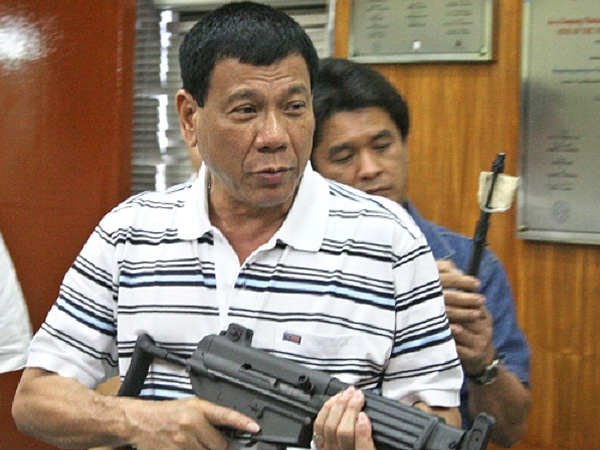
Philippines Is Ripe for Convenience-Store Growth
Chains Such as 7-Eleven and FamilyMart Spread in a Nation With Rising Incomes
MANILA—When a bakery shut down in a prime location in central Manila earlier this year, there was little doubt that a convenience store would open in its place.
Chains such as 7-Eleven, Mini Stop and FamilyMart are spreading over the capital and other cities in the Philippines—where people have typically shopped at basic neighborhood stores—as retailers bet on a largely untapped market with fast-rising disposable incomes.
"If we look at markets in Southeast Asia, the Philippines is the biggest opportunity," said Stuart Jamieson, managing director in the Philippines for market-research company Nielsen.
In terms of convenience stores per capita, the Philippines has a fraction of most other East Asian markets. As of 2012, the country had one for roughly every 41,000 people, Nielsen's latest figures show. South Korea has roughly one store for every 2,000 people. The figure is similar in Taiwan, where 7-Eleven's mascot even starred in his own musical.
The spike in interest in the Philippines is dramatic. Mini Stop and 7-Eleven were the only two convenience store chains in the country 18 months ago. Now there are seven, and most have aggressive expansion plans that will see the number of stores nationwide double from around 2,000 today to 4,000 within four years.
The boom—in retail generally, but in convenience stores in particular—is being driven by the increasing wealth of urban Filipinos. According to the World Bank, gross national income per capita totaled $3,270 in 2013, up from $2,480 in 2009, and almost treble the amount in 2003.
It is also being driven by changing working practices. The country's thriving outsourcing sector employs one million people, many of whom draw good salaries fielding calls from American and European clients at all hours of the day and night. This makes them ideal for the 24-hour convenience-store model.
The new chains also offer a clean, consistent and air-conditioned alternative to the traditional street-side shops that Filipino shoppers still rely on in many parts of the country.
As anticipated, the former bakery in Manila's central business district is now a FamilyMart, a Japanese-owned chain that began opening stores in the Philippines last year. Unlike India, the Philippines welcomes foreign investment in its retail sector.

Inside the new FamilyMart, many lunchtime customers appeared most excited about the self-service ice cream dispenser, paying 25 pesos ($0.55) to balance as much ice cream as possible on top of a small cone. Some stayed in the air-conditioned store to eat. Like many Asian convenience stores, there was a seating area. Otherwise, convenience stores here look similar to others around the world.
FamilyMart's general manager in the Philippines, Eduardo Paredes Jr. , said the company plans to have 500 stores in the country by 2018, up from 130 by the end of this year. "It's a numbers game—you need a few hundred stores to become profitable."
To accelerate growth, the company will begin franchising by the end of September, Mr. Paredes said. Like most operators in the Philippines, FamilyMart combines franchising with direct management. Mini Stop and 7-Eleven, the two entrenched players, are responding with plans for hundreds of new stores.
Indonesian chain Alfamart has a partnership with SM Group, one of the Philippines' biggest conglomerates. This will enable it to draw on SM's local savvy and gain exclusive access to its properties, including nationwide shopping malls, Mr. Jamieson said.

Eduardo Paredes Jr., general manager of FamilyMart in the Philippines, at the chain's newest Manila outlet, on Sept. 16. Trefor Moss/The Wall Street Journal
It isn't unique in this approach. Japanese chain Lawson's will open its first store later this year after a tie-up with retailer Puregold. FamilyMart owes its prime spots in central Manila to its partnership with Ayala Corp. , another powerful conglomerate and real-estate developer.
"Location is the primary factor, but smart operators will also have to differentiate," said Mr. Jamieson.
Alfamart would stand out by positioning itself as a "minimart," said Corazon Guidote, senior vice president at SM Investments Corp. SM.PH -0.06% , a unit of SM Group. She said it would sell staple food and ready-to-cook items.
Other newcomers, U.S. chain Circle K and the locally owned All Day—both of which began opening stores only recently—could be successful because of the sheer scale of the demand, Mr. Jamieson said. Given the number of new players piling into the Philippines, convenience chains could end up merging as the market consolidates, he added.
Mr. Parades looked out from the new FamilyMart in Makati. "There is a 7-Eleven over there, and a Mini Stop on the other corner," he said. "In the future, Manila will be saturated. But there are so many cities elsewhere."
The Wall Street Journal: Write to Trefor Moss at Trefor.Moss@wsj.com






























